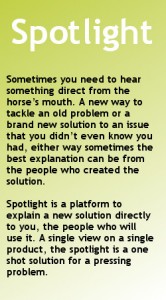Has the managed print services (MPS) model missed the point? Lately, I have been speaking with technology leaders who say it hasn’t delivered what it originally promised. Meeting with businesses, I always lead with this question: if you stopped using MPS, would your end users notice any difference in their interaction with the service, apart from no longer having to authenticate? And invariably, the answer is no.
The business may have saved some costs through consolidating its printer estate and wrapping maintenance into a single cost-per-page leasing model, but we believe this approach hasn’t actually made end users any more productive. That’s because for many companies, printing and scanning to email is an isolated function, when it ought to be integrated.
As the only Lexmark business solutions dealer in Ireland, IPS is well placed to provide that missing integration. Since 2010, Lexmark has aggressively pursued an acquisition strategy that’s given it a broad range of intelligent content management solutions, from companies like Brainware, ISYS, Readsoft and Perceptive Software.
Lexmark’s smart MFP ecosystem is more than just a range of hardware products. It’s a suite of technologies purposely intended to offer a wide range of choice that can be customised to suit the unique needs of every business, rather than just a one-size-fits-all MPS model.
This approach fundamentally changes the conversation with customers. In a print audit, starting with the device is counterproductive; we start with the process. Where is the printed content generated, and how does the MFP integrate with the rest of the customer’s hardware and software estate? Instead of a restricted dialogue about printed forms, we’re now talking about digital document flows throughout their organisation. In a business process discussion like this, the white board is our best friend and what’s more, it instantly gives the end user an involvement and engagement in the process, which almost always leads to better outcomes.
IPS-Lexmark see similar trends across all industries where paper-based processes are unnecessarily complex, unproductive and tedious. We recently engaged with several key clients that have complex and manual document processes that can be enormously simplified by using our Lexmark Smart MFPs in conjunction with on-box and SaaS-based software solutions. Notice, these solutions do not need large IT infrastructures to implement. Using Lexmark Solution Composer and Lexmark Document Distributor Software, we simply map out the processes in conjunction with the client, drop the completed app on the device and invariably capture, route and distribute the document to the correct destination. This process also allows us to extract the required information from the document and push this information to the client’s ERP or CRM solutions.
What’s missing in all this? At no point have we printed on a sheet of paper. Instead, we’ve created a process flow. The billing model is a charge for building the app, processing the document and a charge for the number of documents processed, while the customer benefits from saving time in the approvals process. With Lexmark Solutions Composer, we can have a workflow designed and running in as little as half an hour, and Lexmark’s true smart MPFs have connectors to SharePoint or Google Apps, so they will work with the customer’s preferred environment.
We believe this approach makes us a true technology partner for customers. Partnering with Lexmark, we have a framework that allows customers in any sector to design what they need for the needs of their individual business.
John Jones is MPS solutions manager with IPS.









Subscribers 0
Fans 0
Followers 0
Followers